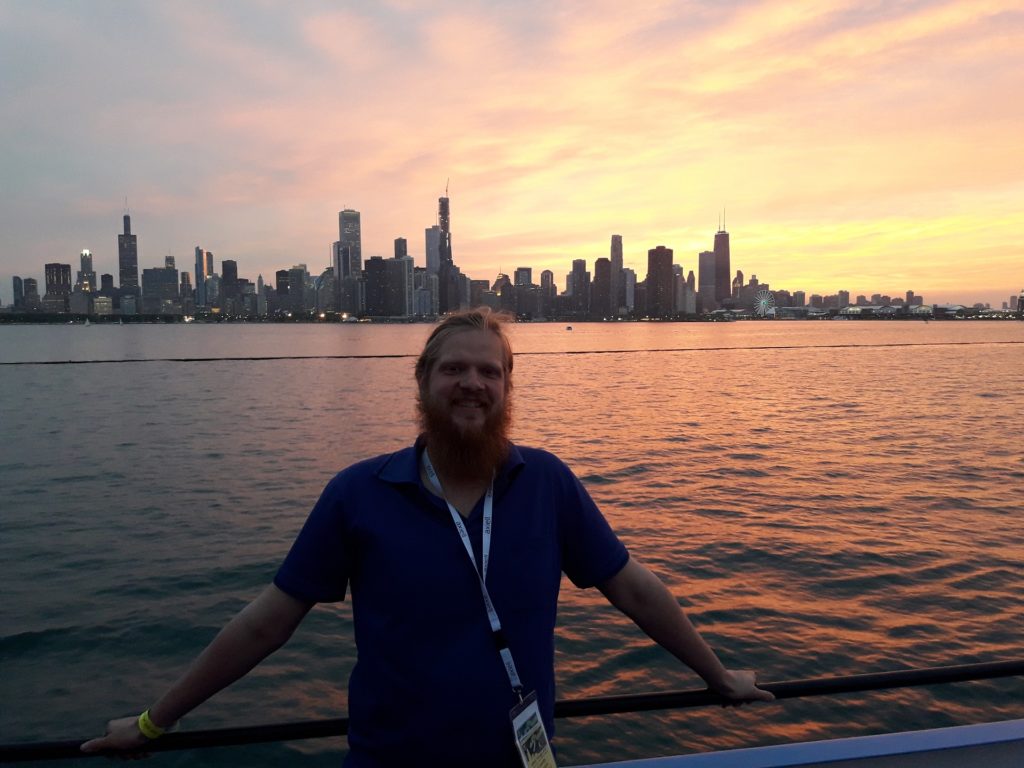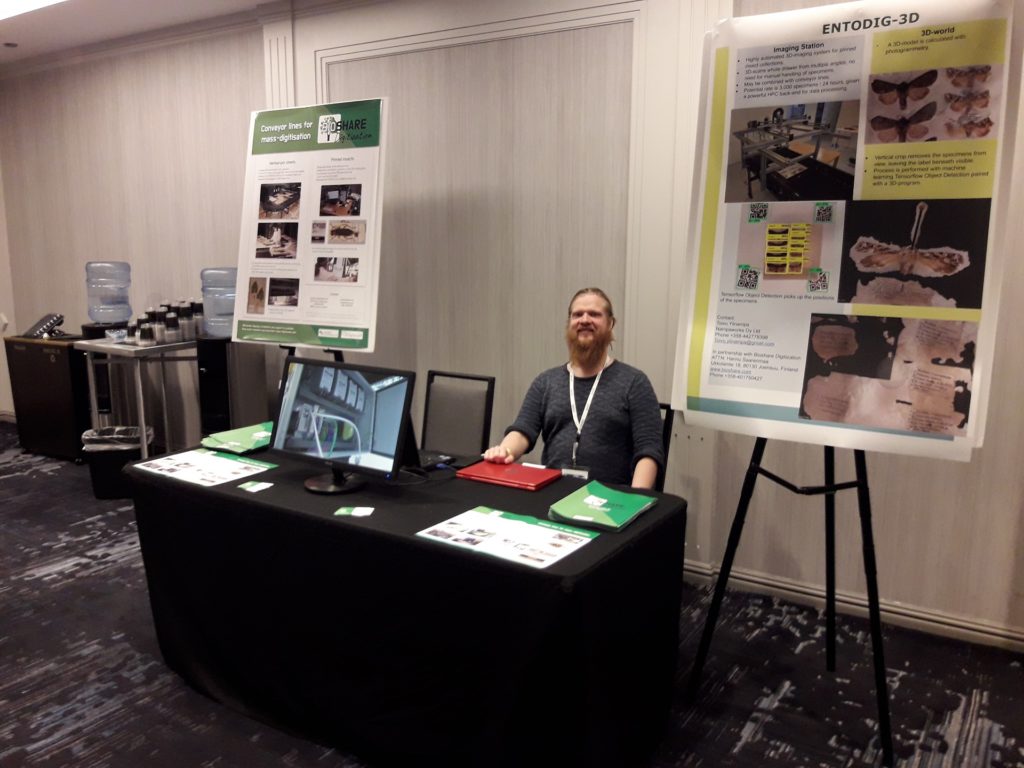Our large conveyor-driven system can also be reconfigured and programmed to process individual pinned insects. Originally developed for processing herbarium sheets, the system can be with small modifications also push through small trays which carry the pinned insects. Their labels can be removed for detailed photography but can in some cases also be left intact if it is sufficient to take one picture from the side of the labels.
See the details in here, and remember to watch the included video!

Our coming back to work has been especially interesting this summer of 2020. After finishing digitization of the Tromsø Museum’s vascular plants collection, we have been focusing on a research and development of our mass digitization systems. Up until now we have been carrying out digitization projects for herbarium sheets and pinned insects. However, conveyor-driven mass-digitization of samples in liquids — is that possible? Maybe, if the specimens can be emptied from their vials and placed flat on petri-dishes or similar. We hear that there is demand for such services, so we had to try.
See our gallery of results from here.


Recently, before taking a well-deserved vacation, we sent the extensive herbarium collection of vascular plants back to Tromsø’s University Museum (Norway) with which we have been working at full capacity since January 2020. Tagging with unique identifiers and imaging resulted in a total of 204,000 images, about 22 terabytes of data.
It has been a very interesting process that has allowed us to enjoy beautiful specimens and to continue developing new processes and more effective ways of working through our mass-digitization system. At Bioshare Digitization we are constantly looking for more efficient ways of working while taking care of and respecting the specimens during their handling.
More details here.
Bioshare Digitization showed its systems at the exhibition of the Biodiversity Next conference at Leiden, the Netherlands, on 21-25 October 2019. Plenty of good contacts were made and old ones refreshed.

Bioshare products are available worldwide. They were shown at the annual meeting of the Society for the Preservation of Natural History Collections on 25-31 May 2018 in Chicago. Below is a picture of Chicago skyline made during the cruise of the Vendors’ Reception.

Bioshare stand also featured a new innovative solution for 3D mass-digitization of insect collections, developed in cooperation with Bioshare partner NampaWorks, and with the support of the ICEDIG H2020 project.
In the pictures appears NampaWorks Founder and CEO Mr. Toivo Ylinampa.


The insect digitization line at the Naturkundemuseum in Berlin has been installed in the exhibition area where visitors can view how digitization is done and how the insects look line.
Our container left for Canada on 2018-12-21. Estimated arrival six weeks later. Three wooden crates house our latest digitization line for herbarium collections, see this.

BioShare Digitization had a booth in the trade show of the joint conference of the Society for the Preservation of Natural History Collections (SPNHC) and the Biodiversity Information Standards organization (TDWG) on 25-30 August 2018 at Dunedin, New Zealand. Many good contacts were made! Send us a line what you thought of our booth and of this new website.
The booth featured a poster and constantly running video presentation of our latest conveyor-driven imaging line. [Click to see a photo of the booth]
This is our new website which went online 2018-09-21. Its contents are still under development. A public announcement to our current and future customers will be made in October 2018.
We have major news to announce. Stay tuned!